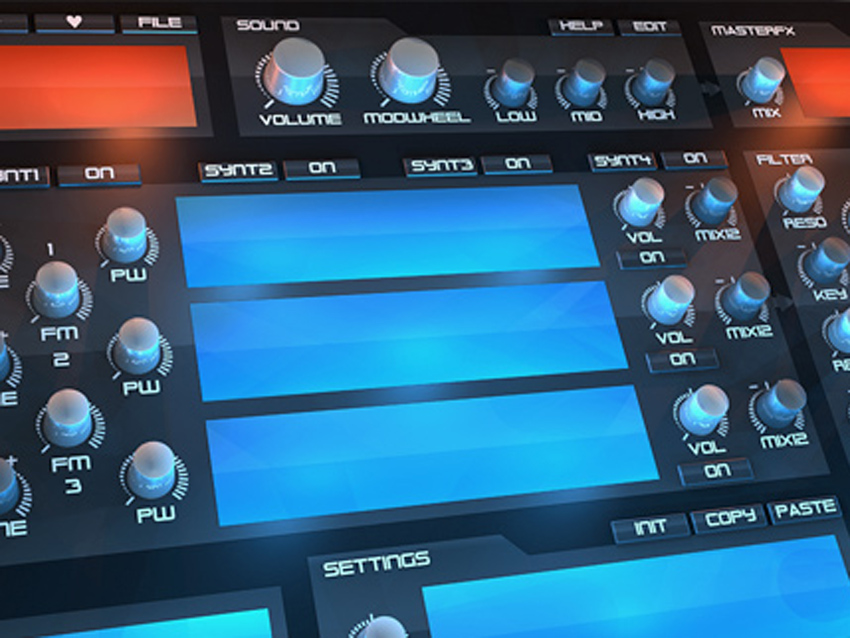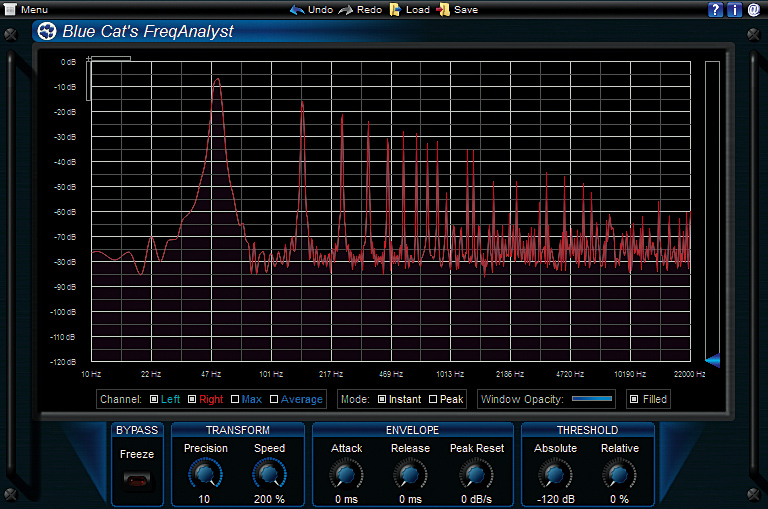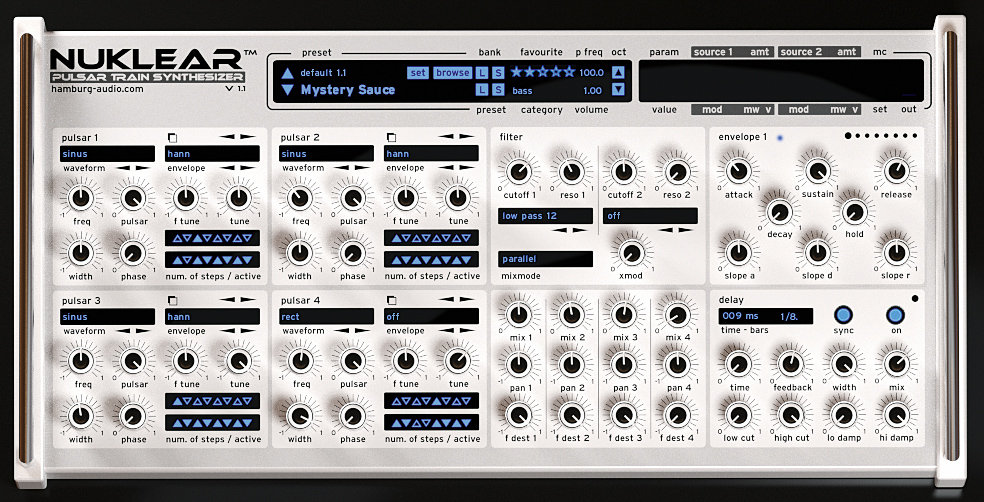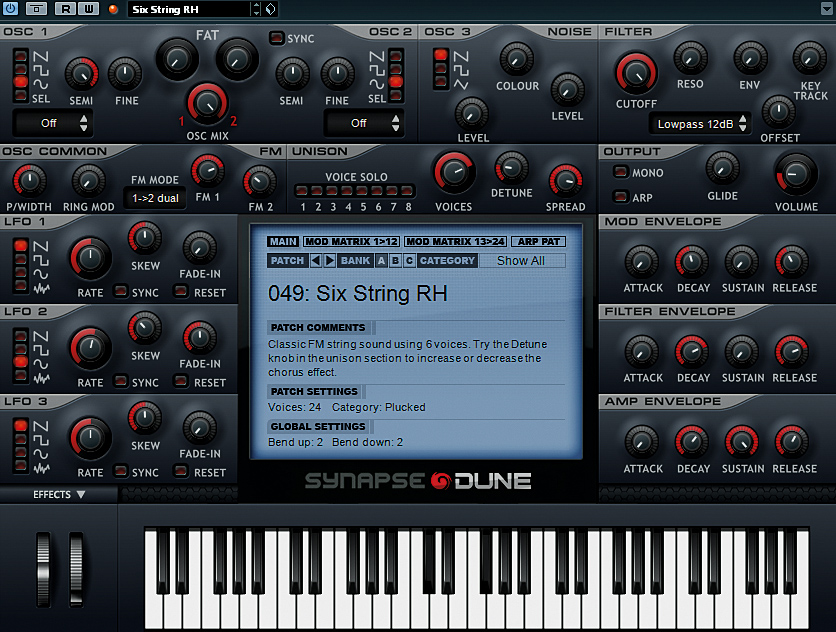23 next-gen VST synth tips

One of the great things about software instruments is that they've freed developers from cost restrictions and enabled them to create VST synths that are as powerful and feature-packed as they can imagine.
But just as synth creators have raised their game, users also need to work a bit harder to get the most out of today's monster instruments. Read on to discover 23 tips that will help you to do just that.
For a complete guide to state-of-the-art synthesis, check out the March issue of Computer Music magazine (CM175) which is on sale now.
Learn your waveforms
The basic waveforms - sine, triangle, square and saw - all have distinctive tones. They all respond differently to filters, and they each have a unique character when stacked in unison. Familiarise yourself with these basic waveforms and experiment with your synth's settings so that you learn which waveforms are useful for which tasks.
Get a handle on the modules
When you first take a look at a synth, you might feel daunted or overwhelmed. Get over this by viewing each synth as consisting of sections or modules, then learning what each one is for. Treat the synth like your lover - 20 minutes of patient exploration early on will lead to hours of rewarding fun later!
Tweak and go
If you're not yet comfortable with making your own sounds from scratch, it's not a sin to use presets - far from it! However, no matter how limited your knowledge is, you must be willing to tweak the presets from day one. That way, you can fine-tune the patches to your track's needs and start to build your signature sound.
It's good to share
When you learn something on a synth, share it with someone. Trading tips and comparing notes with friends is beneficial to all parties. There are always multiple ways to achieve a timbre, so it's a good idea to find out the other methods people are using to get a more rounded understanding of the art.
Want all the hottest music and gear news, reviews, deals, features and more, direct to your inbox? Sign up here.
Reverse engineer
you want a head start to learning what every knob on a synth does, start by exploring the preset patches. Be aware that not every control will have an audible effect on every preset - that's just the nature of synthesis. Open presets that you like the sound of already and try to figure out how they work.
Use references
If you're not sure whether your lead is as screaming or your bass is as thunderous as your favourite record, put on your favourite record. It really is that simple. Too many people neglect to make a direct comparison between their work in progress and the records they wish it to be played alongside. Close scrutiny is an absolute necessity.

Overanalysing
Spectral analysers won't do any synthesis for you, but at least they can help you to learn about sound. Fire one up to learn what's going on in your reference tracks and figure out where there are problems that you need to address in your work. Just make sure you pick the analyser that's right for you and set it to the fastest, highest-quality setting that your system's CPU can handle.
Get it on with a random
If your synth patch is running low on originality or character and you're running low on ideas or creativity, don't be afraid to try something random. Not every good idea will come intuitively, especially if you're looking to innovate. Maybe something you couldn't find a use for before is worth trying.
Creative restrictions
You don't necessarily need the flashiest synth on the market in order to come up with the flashiest sounds. If you're limited to the synths built in to your DAW or the freebies you can find online, you might have an additional challenge ahead of you, but you should try to view these restrictions as a reason to flex your creativity even further.
Saving banks
Even if you're not that good yet, you should keep your presets organised and save your own banks of them. This way, you'll always be able to refer to your work at a later date. Sometimes the stuff that doesn't turn out to be useful when you made it turns out to be just the thing you're looking for later on!

Get curious
Play with the different modes and settings on your synths. What does pulse width modulation do to a saw? Does the patch sound better with x2 oversampling, or x4 oversampling? What does saturation type 3 sound like? These are the sorts of questions you should be asking yourself.
Mighty morphin'
Synths such as LinPlug's MorphoX can morph from one patch state to another. This technique is a great way to put motion into a patch, even if the two states that you're morphing between aren't radically different.
Unique freak
If you're after a unique sound, look for synths with quirky and unconventional features. XILS-lab's PolyKB II boasts a morphing oscillator, for example, while Tone2's ElectraX can make sounds using fractal synthesis.

See you later, oscillator
A lot of modern synthesis is about breaking away from traditional waveforms (although you still need an understanding of these). Hamburg Audio's Nuklear, for example, employs pulsar synthesis. The stranger the things you can do with those oscillators, the better.
Layer synths
If producing the desired timbre with one synth is proving to be a challenge, try two or more separate patches. Layering sounds on different octaves is a surefire way to fatten up any mix, so long as each layer is neatly tucked into its own frequency space.
Layer acoustic sources
Layering acoustic and synthesised instruments can work a treat - they add an extra dimension to the sonic texture that's difficult to reach with synths alone. If you don't have access to live musicians, try an acoustic sample library.

Hybrid beasts
Hybrid synths are those that combine, say, FM synthesis with subtractive and wavetable. Synapse Dune does just that, so you can use multiple forms of synthesis in new contexts. Want to try FM patches in unison? No problem.
Noisy buggers!
A noise generator is an extremely powerful addition to any synth. Bursts of noise that are controlled with the filters and envelopes can add extra bite and presence to the attack of your patch. Alternatively, you might find that a bit of noise mixed in quietly fattens up your sound or gives it some high-end sheen.
Translate patches
If you've figured out how to produce a particular timbre in a synth, it's a good idea to take the time to open up a second synth and put both interfaces side by side. Do your best to convert from one synth to the other. They'll have to be using the same synthesis style for this to work, but you'll learn an awful lot about synthesis and those particular synths even if you don't get decent results.
Use audio editing
When you feel you've taken a patch as far as you can, you might want to take it out of the sequencer and put it into an audio editor for further work. Such software tends to offer editing at the sample level. You'll be able to zoom right in, copy and paste and generally bend the usual laws of physics.
Synthesise now, add effects later
Some synthesists hold the view that it's better to leave any FX until the end of the synthesis process. The argument is usually that you have more control over a timbre at the synthesis level, and it's better to modulate the oscillators or whatever instead of using distortion or something that might have negative side-effects.
Demo stuff
Most plug-in developers are generous when it comes to demo versions and trial periods. If you want to test out a new type of synthesis or find out whether an alternative synth would be better for producing the sound you have in mind, there's no excuse for not trying before you make your purchase decisions.
Take the plunge
There's no place for fear if you want to master an artform. Some people are put off by things that seem alien at first, but knowledge really is power. Just go easy on yourself and be patient! The time that you invest in learning new skills will be made worthwhile when you're trying to nail a sound later.
Liked this? Now read: The 20 best VST plug-in synths in the world today
Computer Music magazine is the world’s best selling publication dedicated solely to making great music with your Mac or PC computer. Each issue it brings its lucky readers the best in cutting-edge tutorials, need-to-know, expert software reviews and even all the tools you actually need to make great music today, courtesy of our legendary CM Plugin Suite.
